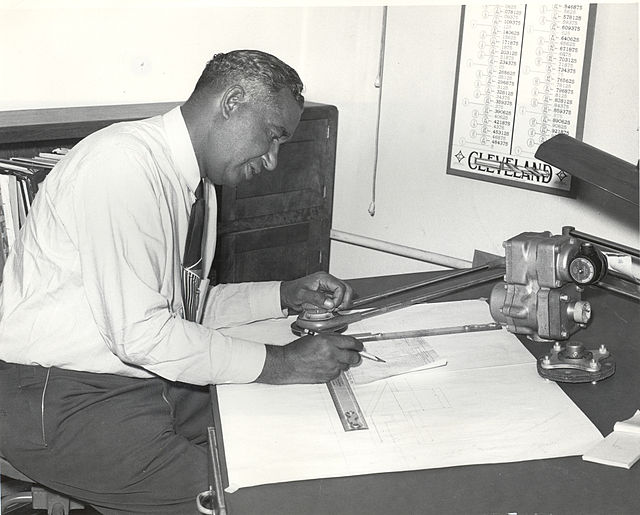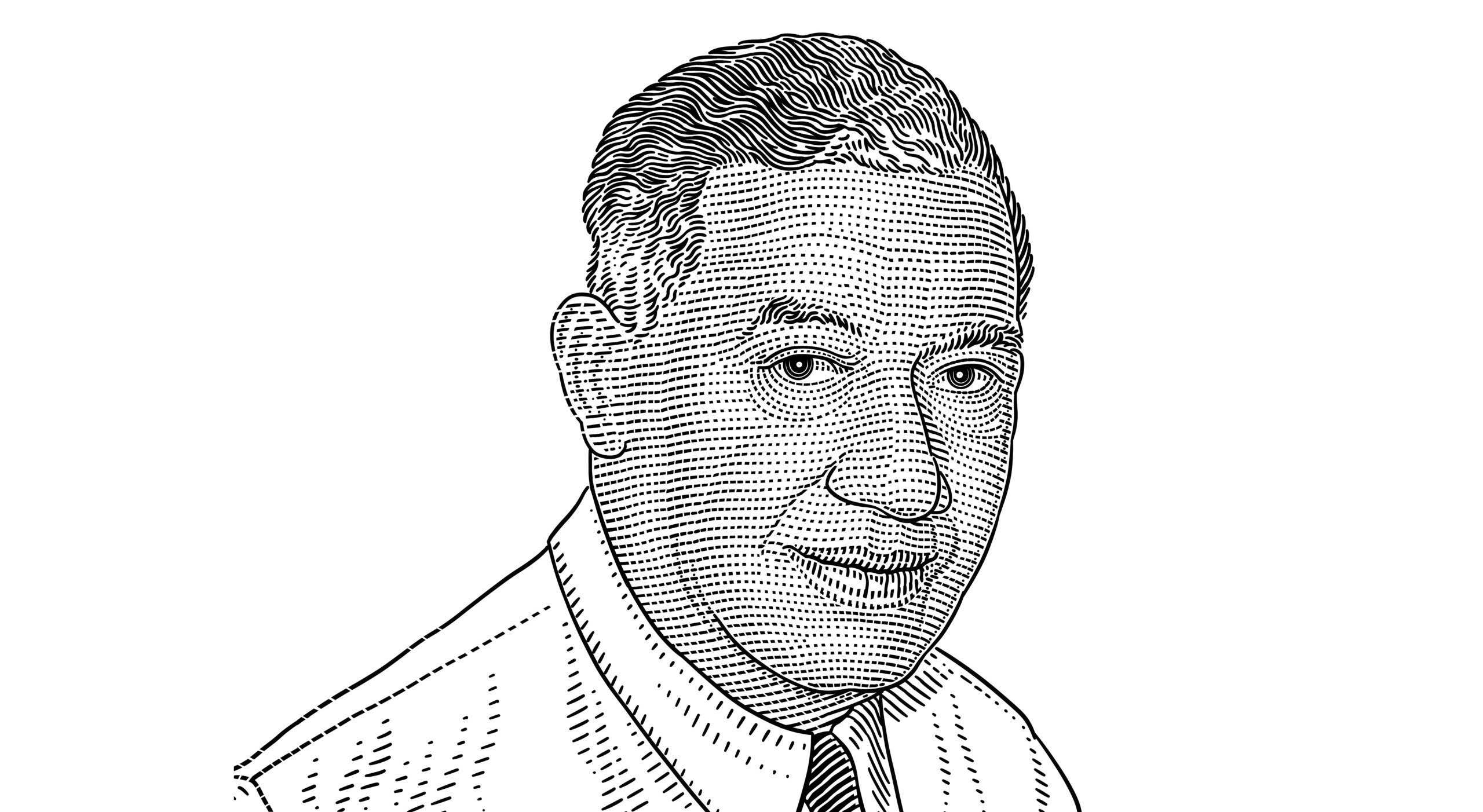Today marks the 51st installment in a series of articles by HumanProgress.org titled Heroes of Progress. This column provides a short introduction to heroes who have made an extraordinary contribution to the well-being of humanity. You can find the 50th installment here.
This week, our hero is Frederick McKinley Jones, an American inventor, engineer, and entrepreneur. With more than 60 registered patents across various fields, Jones was one of the most prolific African American inventors of the 20th century. Jones is best known for inventing mobile refrigeration systems for trucks, trains, and ships. His invention meant that fresh produce and other perishable goods could be delivered on a large scale anywhere without spoiling, regardless of the season. Starting in World War II, Jones’ refrigeration units were also used to transport blood, organs, and vaccines worldwide. Later versions of his refrigeration units are still in use today and have been used extensively to transport COVID-19 vaccines. Mobile refrigeration revolutionized the supermarket and restaurant industries, leading to billions of people being better fed, and transformed the medical industry, helping save millions of lives.
Jones was born on May 17, 1893, in Covington, Kentucky. His mother left while Jones was young, and his father, a railroad worker, struggled to raise him alone. When Jones was seven years old, his father sent him to live with a priest in Cincinnati, Ohio. However, at the age of eleven, just after finishing sixth grade, Jones left school and ran away from the priest. Jones ended up taking odd jobs across Cincinnati, and while working as a garage janitor, he discovered a passion for automobile mechanics. Despite his lack of formal education, Jones would observe the mechanics and absorb as much information as possible. Within three years, he became the foreman of the garage.
In 1912, after short stints working in a hotel and onboard a steamship, Jones moved to Hallock, Minnesota, and began working as a mechanic on a large farm. During this time, Jones started building race cars to drive at county fairs and racing exhibitions. His cars were built and designed so well that they overwhelmed the competition, and Jones became one of the most well-known racers in the Great Lakes region. By 1913, Jones had secured an engineering license.
During World War I, Jones joined the U.S. Army as an electrician, and while serving in France, he performed the necessary wiring to ensure that his camp was equipped with telegraphs, electricity, and telephones. Jones was discharged with the rank of sergeant in 1919 and returned to the farm in Hallock.
Soon after his return, Jones built a transmitter for the town’s first radio station. He would also regularly help doctors by driving them to house calls during harsh Minnesotan winters. One year in the early 1920s, when the snow was so deep that it was impossible to navigate through it by car, Jones attached skis to an airplane fuselage, along with a propeller and motor. Soon doctors were zipping around Kittson County at high speeds in Jones’ “snowmachine.” Although he never patented it, in effect, Jones had built an early version of the modern snowmobile. Similarly, when he heard a local doctor lamenting that patients had to travel to the clinic for x-ray exams, Jones developed a portable x-ray machine that doctors could take to patients’ homes.
In the mid-1920s, Jones invented the first process and devices that enabled silent movie projectors to play recorded sounds. For the first time, “talking pictures” were possible. This invention attracted the attention of local businessman Joseph A. Numero, who owned a company that developed audio equipment. Numero hired Jones in 1927, and for several years Jones focused on converting silent movie projectors into talking projectors. Jones also found ways to stabilize and improve the picture quality of projectors. In the 1930s, he also invented and patented a machine for movie theaters that automatically dispensed tickets and change to customers.
However, Jones’ most important invention resulted from a $6 bet made by Numero during a game of golf. One of Numero’s friends, who owned a trucking business, complained that he had a contract to transport raw chicken from St. Paul, Minnesota, to Chicago, Illinois (a 400-mile drive), but because of high temperatures, an entire load of chicken had spoiled. Numero responded that his engineer, Jones, could easily solve that problem and create a refrigerated trailer—within just 30 days. Numero’s friend was skeptical of this claim, and the pair made a bet for $6 (about $122 in 2022 USD).
Within two weeks, Jones had designed a prototype, and within 30 days, he had a working model for the first unit, called Thermo Control Model A. Jones’ design attached refrigeration equipment to the undercarriage of trucks, which then flowed chilled air into the trailer via refrigerant tubing.
Numero immediately recognized the potential of this invention and promptly sold off his audio equipment business. In 1938, he formed a partnership with Jones called the U.S. Thermo Control Company (renamed Thermo King Corporation in 1941), with Jones as vice president. In the same year, Jones filed a patent for the Model A refrigeration unit, which he received in 1949.
Jones then modified the design so it could be fitted on trains and ships, and by 1941, he created the Model C. This newer model mounted the refrigeration unit on the front of the truck and was lighter and more durable than previous designs. The Model C was manufactured for military use during World War II and became incredibly important for preserving medicine, blood, and food for army hospitals and troops on the frontline. The U.S. military applied Jones’ invention to their trucks, boats, and planes. Jones also developed cutting-edge refrigerators for military field kitchens and air-conditioning units for field hospitals.
After the war, the Thermo King grew rapidly. In the 1940s, Jones also developed gasoline-powered refrigerated boxcars, which helped further reduce shipping costs and made fresh produce more widely available and cheaper. By 1949, Thermo King was a $3 million business ($36 million in 2022 USD). In the 1970s, the company expanded to Europe, and today, it continues to sell later versions of Jones’ invention worldwide.
Throughout his life, Jones accumulated more than 60 patents in various fields, including refrigeration, engines, sound equipment, and x-ray machines. Jones received dozens of awards and honors, both during his lifetime and posthumously. In 1944 he became the first African American member of the American Society of Refrigeration Engineers. In 1977 he was inducted into the Minnesota Inventors Hall of Fame, and in 1991, President George H. W. Bush posthumously awarded him the National Medal of Technology. In 2007, Jones was inducted into the National Inventors Hall of Fame.
Jones continued to work for Thermo King Corporation, and during the 1950s, he became a consultant for several branches of the government, including the Bureau of Standards and the Department of Defense. In 1961, aged 67, Jones died of lung cancer in Minneapolis, Minnesota.

By inventing practical mobile refrigeration units, Jones helped change consumers’ eating habits forever. Before the invention of practical mobile refrigeration units, produce had to be transported in cans. But now, people can eat fresh produce year-round, which has undoubtedly improved the health of billions of people and transformed the global economy. By making it easier to transport blood, vaccines, and organs, Jones’ invention also transformed the medical industry and, in the process, has saved millions of lives. For these reasons, Frederick McKinley Jones is our 51st Hero of Progress.

